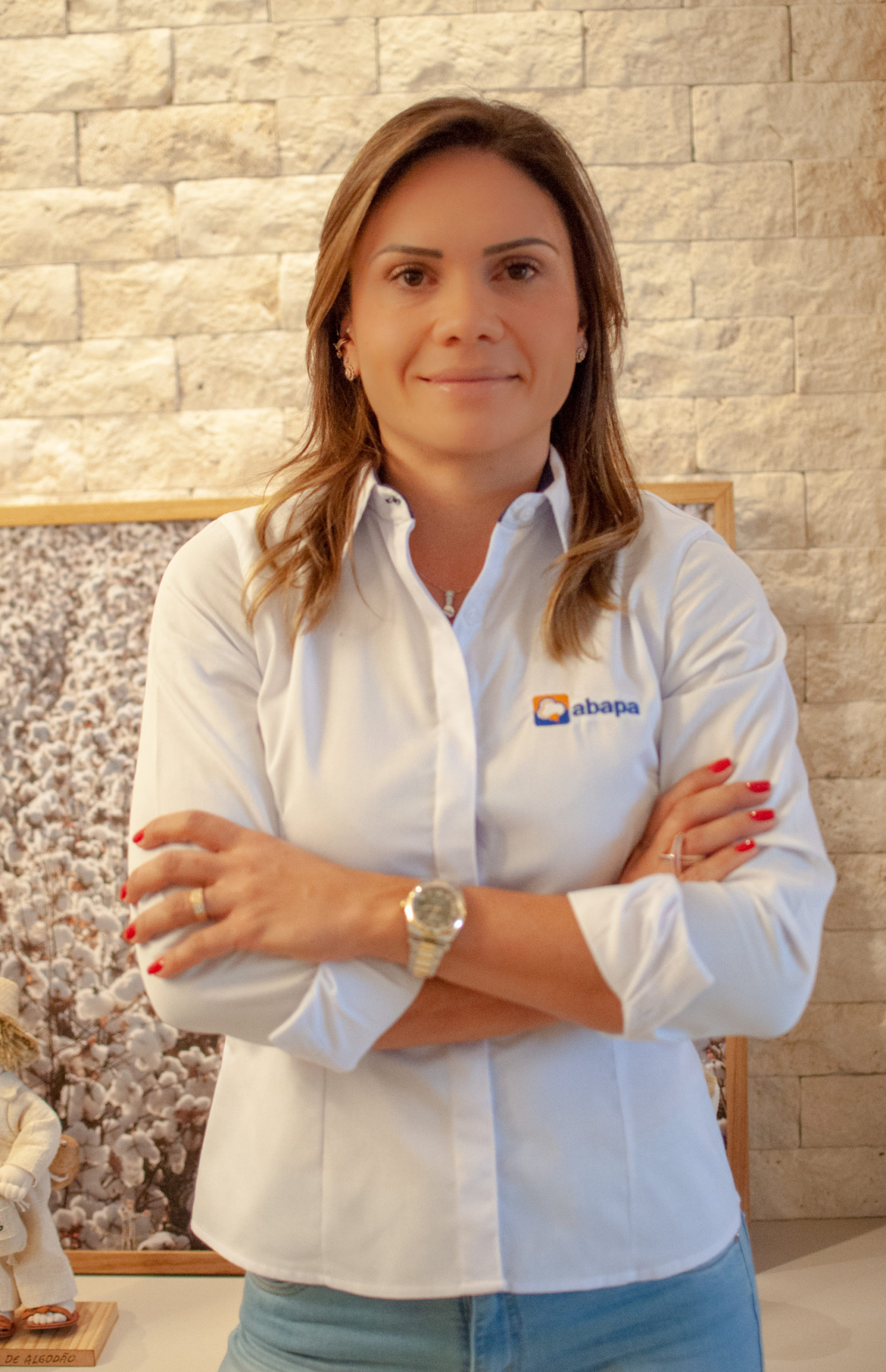USDA reports estimate that between 2021 and 2022, cotton demand shall recover after the impacts of Covid, and it will even be greater than the production, decreasing world stocks.

Alessandra Zanotto Costa cotton grower in Bahia state
According to Brazilian National Supply Company (Conab), cotton planted area dropped by 16% in the country, losing ground to soybean and corn. The delay in soybean harvest pushed cotton sowing out of its ideal window.
Brazil is an important player in the market, and within the country, Bahia state is the second greater cotton producer, with 266,912 hectares planted for 2020/2021 season.
AgriBrasilis interviewed Alessandra Zanotto Costa, farmer and vice-president of Abapa – Bahia Cotton Growers Association.
AgriBrasilis – What makes Bahia state the second largest cotton producer of the country?
Alessandra Zanotto Costa – First, the planted area. In 2020/2021, Bahia state planted 266,912 hectares, only behind Mato Grosso state (950 thousand hectares) and ahead of Goiás (27.3 thousand hectares). However, there is an even more relevant factor to Bahia excellent performance in cotton crops: yield. The state has an average yield superior to Brazilian one, which is already one of the highest of the world, and leading the rank when considering rainfed production. In Bahia state, it is harvested 1,845 kilograms of fiber per hectare, against 1,784 in Brazil average.
AgriBrasilis – What is the profitability per hectare? Which inputs weigh more in the cost of production?
Alessandra Zanotto Costa – It’s hard to define a general profitability per hectare because it depends on production costs, yield and market prices. Production costs depend, among others, on how much one invests in technology, the number of pesticide applications etc. This ranges from farmer to farmer. In the same way, yield depends on investments, technique and weather. Even markets, which are the same to all farmers, might pay more or less depending on the fiber quality. As a parameter we can talk about 30% EBITDA profitability, though its not a fixed number. Pesticides and fertilizers are the ones that weigh the most in costs.
AgriBrasilis – What pests are more common and which products are used for control?
Alessandra Zanotto Costa – The cotton plant is attacked by a large number of pests and diseases. Among them, boll weevil continues to be the worst enemy of cotton crops since it arrived to Brazil, in 1983, and almost eradicated the crop as an economic activity in the country. Against it, it is needed intensive control with insecticides and agronomic techniques such as the destruction of ratoon and volunteer plants, with chemical and mechanical management, in addition to crop rotation and observance of the sanitary void. Caterpillar complex also causes problems. A few years ago, the appearance of cotton bollworm caused billionaire losses, because it was unknown to farmers and technicians. Today it is under control, and this is done by both chemical insecticides and resistant genetic material, also biological technologies, such as viruses and bacteria. In this harvest, the greatest pressure has come from spodoptera caterpillar. Other pests such as aphid, mite, and silverleaf whitefly also require a lot of attention. Among the diseases, the most relevant are ramularia areola and nematodes.
AgriBrasilis -What new technologies are employed?
Alessandra Zanotto Costa – Integrated management of pests and diseases have been key to the sustainability of cotton crops and in this scheme are genetic materials, chemical pesticides, cultural practices and, more and more, biological control. The combined use of all these technologies has proven to be the most effective.
AgriBrasilis – What is the forecast for this year’s harvest?
Alessandra Zanotto Costa – According to the most recent survey, it will be 492,453 tons of fiber in the harvest that will begin soon.

